IEEE North Jersey Section and Radio Club of America (RCA) Workshop Talks: A series of 5 talks on “Recent and Emerging Technology in the field of Antenna and "HAARP”
#Antenna
#AI
#VR
#5G-6G
#Dipole
#GPS
#SDR
#MIMO
#5G
#IoT
#HARP
#WIE
#RCA
#RADAR
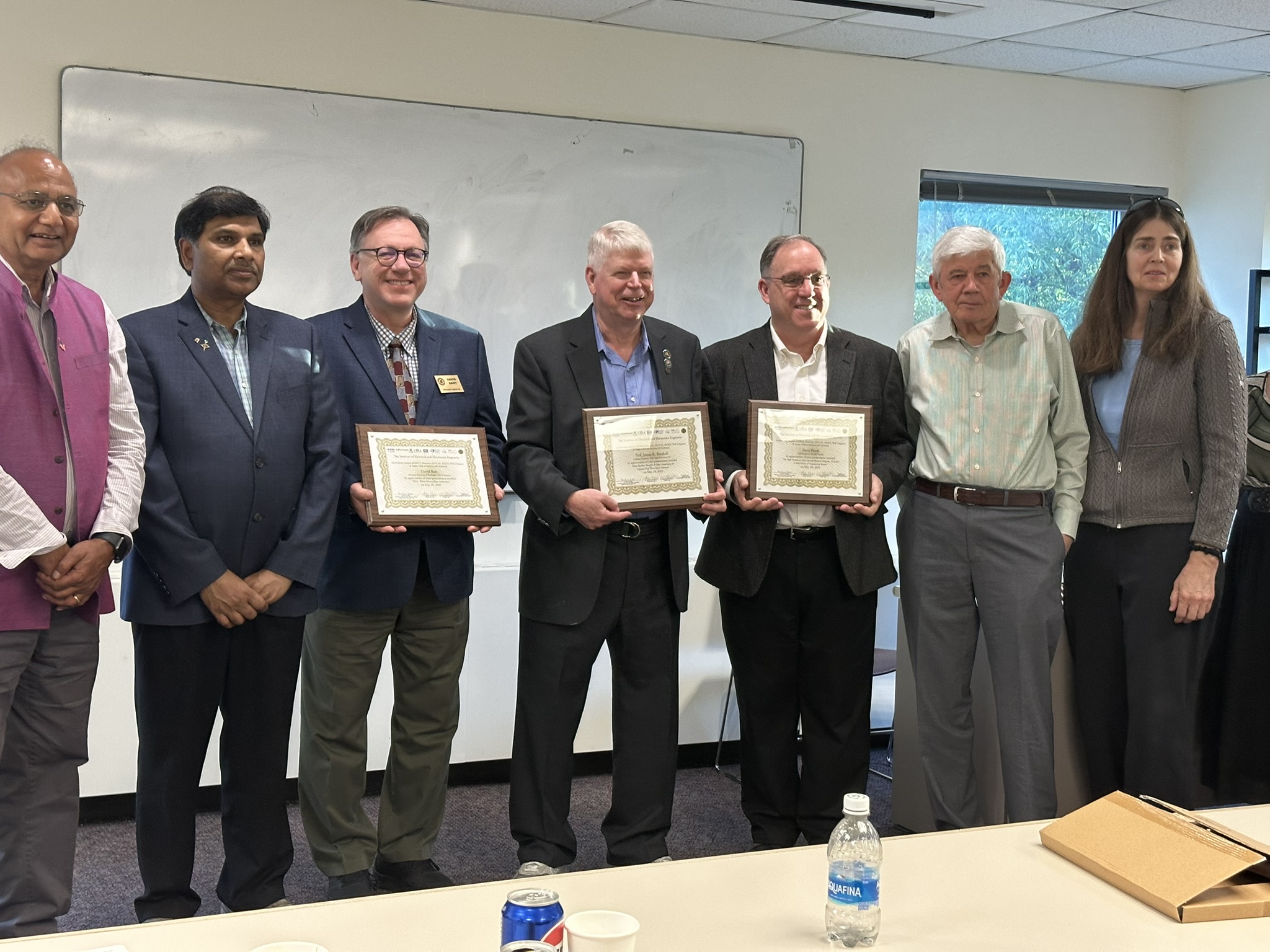 Talk 1: Optimizing Rod Antennas for Manpack Systems for Both Amateur and Military Applications, Invited Speaker: Prof. Ulrich L. Rohde
Talk 1: Optimizing Rod Antennas for Manpack Systems for Both Amateur and Military Applications, Invited Speaker: Prof. Ulrich L. RohdeRod antennas, widely used in portable radio systems, are crucial for reliable communication in amateur and military contexts. These systems must perform well under varying environmental and ionospheric conditions, where signal propagation is frequency-dependent. At any time of day, an optimal frequency or small band of frequencies between two points remains stable for several hours. We can perform best by properly matching an antenna to this frequency. In this discussion, we will introduce a combination of matching techniques that improve transmission and provide better coverage than previous methods.
Talk 2: Some Further Thoughts and ideas concerning the classical half-wave diploe antenna, Invited Speaker: Prof. James Breakall
The half-wave dipole is a popular antenna in amateur radio and communications, often the first studied in college courses. Professor R.W.P. King dedicated over 100 years to dipole research, and his accurate measurements support antenna modeling software. Professor John Kraus’s 1950 book, *Antennas*, has also inspired many in the field. This presentation will cover key topics related to the half-wave dipole. We will evaluate the accuracy of various antenna modeling codes, using a FEKO surface model as a reference and comparing it to wire Method of Moments (MoM) methods. Additionally, we will review the formula 468/f for calculating the length of a half-wave dipole in feet and discuss its limitations regarding different wire or tubing diameters. Finally, we will introduce a new design method for constructing a half-wave dipole antenna that works regardless of the conductor's diameter.
Talk 3:The State-of-the-Art in Antenna-based Techniques for Mitigating Threats to the Global Positioning System (GPS), Invited Speaker: Jack L. Burbank
Nearly every aspect of society relies on positioning, navigation, and timing (PNT) services from Global Navigation Satellite Systems (GNSS), like GPS. However, GPS signals are vulnerable to spoofing and jamming due to their unauthenticated nature and weak signal strength. These attacks can be easily executed using low-cost hardware and open-source software, putting many regions at risk. Research over the past few decades has aimed to improve PNT performance against these threats, focusing on five main approaches: 1) signal processing methods, 2) antenna-based techniques, 3) artificial intelligence (AI), 4) non-GNSS sensors, and 5) hybrid methods. This presentation will provide an overview of GPS and GNSS technologies, common attack strategies, and mitigation methods, emphasizing antenna-based techniques. It will introduce a classification of these methods, aiming to enhance authentic signal reception while reducing interference from attackers. Key techniques, ongoing research, and future directions will also be discussed.
Talk 4:The High Frequency Active Auroral Research Program, “HAARP”, A Brief History and Engineering Review. Invited Speaker: Steve Floyd
The HAARP Research Facility is a state-of-the-art ionospheric research project in Alaska, funded by the U.S. Air Force, U.S. Navy, and DARPA. Constructed by APTI/BAE Systems, it analyzes the Earth's ionosphere to enhance radio communications and surveillance. Construction began in 1993, research operations started in 1996, and the facility was completed in 2007. In 2015, control was transferred to the University of Alaska Fairbanks (UAF). The main instrument, the Ionospheric Research Instrument (IRI), consists of a 180-antenna phased array operating at 5 gigawatts, making it one of the most powerful high-frequency transmitting systems globally. It temporarily excites areas of the ionosphere for scientific research and is also equipped with VHF and UHF radars, magnetometers, and low-light CCD cameras. HAARP is noted for addressing unique challenges in radio engineering. This presentation will summarize the facility's design and operation, along with examples of the scientific research conducted there.
Talk 5: RCA – Where History Meets Innovation, Invited Speaker: David Bart
The Radio Club of America was founded in 1909 by enthusiastic young experimenters in wireless telegraphy. It quickly became a magnet for innovators, entrepreneurs, inventors, industry leaders, and historians interested in all aspects of communication without wires. Our pantheon of legendary members continues to hold significant roles in developing radio, television, mobile communication, satellite, space research, mmWave, and digital technologies. We are a forum, a gathering place for professional, scientific, and amateur practitioners of these arts. Join us for a collegial discussion about how history meets innovation.
Date and Time
Location
Hosts
Registration
-
 Add Event to Calendar
Add Event to Calendar
-
141 Warren St, New Jersey Institute of Technology
-
The Lewis and Julia P. Kieman Conference Room
-
Newark, New Jersey
-
United States
07102
-
Building:
ECEC
-
Room Number:
202

-
Contact Event
Hosts
-
Dr. Ajay K. Poddar, email: akpoddar@ieee.org
Dr. Durga Misra, email: dmisra@njit.edu
Dr. Anisha Apte, email: anisha_apte@ieee.org
Dr. Nahresh Chand: chandnaresh@gmail.com
Dr. Edip Niver, email :niver@njit.edu
David Bart, email: email:jbart1964@gmail.com
-
Co-sponsored by
IEEE North Jersey Section AP/MTT17, ED/CAS, PHOTONICS Chapter and Radio Club of America (RCA)
- Starts
04 April 2025 04:00 PM UTC
- Ends
20 May 2025 04:00 PM UTC
- No Admission Charge
Speakers
Topic:
Some Further Thoughts and ideas concerning the classical half-wave diploe antenna
The half-wave dipole is one of the most widely used and practical antennas in amateur radio and various communication applications. Its foundational principles make it a staple in early studies of antenna technology, often being one of the first antennas covered in academic courses dedicated to the subject. Professor R.W.P. King, a prominent figure in the field, dedicated most of his 100-year career to meticulously measuring dipoles and monopoles. His groundbreaking research led to measurements of unprecedented accuracy, benchmarks in validating antenna modeling software even today. Another significant contributor to the understanding of dipole antennas is Professor John Kraus. His influential book, *Antennas*, published in 1950, inspired countless antenna engineers and enthusiasts, including myself, to delve deeper into the science of antenna design and application. This presentation aims to delve into various aspects of the half-wave dipole, a classical antenna, while proposing new perspectives on commonly accepted facts and practices. We will first investigate the accuracy of multiple antenna modeling codes using the half-wave dipole as a benchmark. A unique surface model was developed in the FEKO software to serve as a reference dipole. This model will be compared to results from several other codes that utilize the wire method of moments (MoM), providing insight into the strengths and weaknesses of different modeling approaches. Additionally, we will analyze the well-known formula 468/f, which calculates the length of a half-wave dipole in feet, with 'f' representing the frequency in megahertz (MHz). This formula is well-remembered by hams and often featured as a test question for obtaining an amateur radio license. We will discuss the effectiveness of this formula in practice, exploring its historical context and debunking common myths surrounding its application. It is worth noting that this formula does not consistently provide accurate tuning for resonating an antenna at a desired frequency across all wire or tubing diameters. We will introduce a straightforward interpolation method to facilitate precise adjustments that can significantly enhance tuning accuracy. Finally, we will present a novel design methodology for constructing a half-wave dipole antenna independent of the conductor’s diameter, whether solid wire or tubing. This innovative approach aims to simplify the design process and improve the overall performance of the antenna across various frequency ranges, ensuring better adaptability and efficiency in real-world applications. Through this presentation, we hope to offer a deeper understanding of the half-wave dipole antenna and its relevance in modern communications.
Biography:
Prof. Emeritus James K. Breakall, Life Fellow IEEE, Fellow RCA
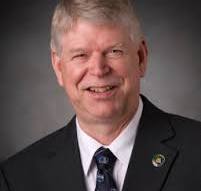 Dr. Breakall holds a doctorate in Electrical Engineering and Applied Physics from Case Western Reserve University, Cleveland, OH, and has over 50 years of experience in numerical electromagnetics and antennas. Dr. Breakall is a full professor emeritus of Electrical Engineering at Penn State and a part-time Senior Engineer for Sabre Systems, LLC. In addition to his past senior and graduate antenna courses, teaching assignments, and thesis advising for numerous Doctoral and Master’s candidates, he still performs research studies and projects for the Army, Air Force, Navy, and Marines in the antenna field. A representative sampling of these include: Former professor at the Naval Postgraduate School, Project Engineer on team that developed the Numerical Electromagnetic Code (NEC) at the Lawrence Livermore National Laboratory, Project on modeling the antenna wires which trail at up to five miles from a Boeing E 6A jet aircraft on Navy TACAMO program, Designed antenna for the world's most powerful (6 gigawatts ERP) and sophisticated HF ionospheric modification facility HAARP for the Air Force and Navy, Led the HF Polar Equatorial Near-Vertical Incidence Experiment (PENEX) for Navy, Worked on new antenna design UESA for the E2C for Navy (NAWC-AD – PAX River), Led project for the design of a new HF Cassegrain feed (300 megawatts ERP) at the Arecibo Observatory, PR, 1000 foot dish antenna, Designed both vertical and horizontal bicone rapid deployable antennas that have instantaneous bandwidth for the whole HF band (3 to 30 MHz) for the Air Force Research Lab at Rome NY. Dr. Breakall is a Life Fellow of the Institute of Electrical and Electronics Engineers (IEEE) Antennas and Propagation Society, IEEE Broadcast Technology Society, is a Fellow of RCA, has been actively involved as an officer in the Applied Computational Electromagnetics Society (ACES), Eta Kappa Nu, International Union of Radio Science Commission B, IEEE Wave Propagation and Standards Committee, and an Associate Editor for the Radio Science Journal. He has patents for the 3D-Frequency Independent Phased Array and a low-profile antenna for AM broadcasting called the Kinstar. He invented a concept for HF and higher frequency Yagis called the Optimized Wideband Antenna (OWA). He consults on a project using HF antennas and propagation analysis for what is known as high frequency stock trading to beat the speed of fiber optic lines by using the ionosphere at HF. He is also very active in the Radio Club of America on the Board of Directors, Technical Symposium Chairman. He received the prestigious Sarnoff Award in 2017 and the Ulrich Rohde Award in 2024. He has been a very active Amateur Radio operator (WA3FET) for 60 years and has given many talks for this community.
Dr. Breakall holds a doctorate in Electrical Engineering and Applied Physics from Case Western Reserve University, Cleveland, OH, and has over 50 years of experience in numerical electromagnetics and antennas. Dr. Breakall is a full professor emeritus of Electrical Engineering at Penn State and a part-time Senior Engineer for Sabre Systems, LLC. In addition to his past senior and graduate antenna courses, teaching assignments, and thesis advising for numerous Doctoral and Master’s candidates, he still performs research studies and projects for the Army, Air Force, Navy, and Marines in the antenna field. A representative sampling of these include: Former professor at the Naval Postgraduate School, Project Engineer on team that developed the Numerical Electromagnetic Code (NEC) at the Lawrence Livermore National Laboratory, Project on modeling the antenna wires which trail at up to five miles from a Boeing E 6A jet aircraft on Navy TACAMO program, Designed antenna for the world's most powerful (6 gigawatts ERP) and sophisticated HF ionospheric modification facility HAARP for the Air Force and Navy, Led the HF Polar Equatorial Near-Vertical Incidence Experiment (PENEX) for Navy, Worked on new antenna design UESA for the E2C for Navy (NAWC-AD – PAX River), Led project for the design of a new HF Cassegrain feed (300 megawatts ERP) at the Arecibo Observatory, PR, 1000 foot dish antenna, Designed both vertical and horizontal bicone rapid deployable antennas that have instantaneous bandwidth for the whole HF band (3 to 30 MHz) for the Air Force Research Lab at Rome NY. Dr. Breakall is a Life Fellow of the Institute of Electrical and Electronics Engineers (IEEE) Antennas and Propagation Society, IEEE Broadcast Technology Society, is a Fellow of RCA, has been actively involved as an officer in the Applied Computational Electromagnetics Society (ACES), Eta Kappa Nu, International Union of Radio Science Commission B, IEEE Wave Propagation and Standards Committee, and an Associate Editor for the Radio Science Journal. He has patents for the 3D-Frequency Independent Phased Array and a low-profile antenna for AM broadcasting called the Kinstar. He invented a concept for HF and higher frequency Yagis called the Optimized Wideband Antenna (OWA). He consults on a project using HF antennas and propagation analysis for what is known as high frequency stock trading to beat the speed of fiber optic lines by using the ionosphere at HF. He is also very active in the Radio Club of America on the Board of Directors, Technical Symposium Chairman. He received the prestigious Sarnoff Award in 2017 and the Ulrich Rohde Award in 2024. He has been a very active Amateur Radio operator (WA3FET) for 60 years and has given many talks for this community.
Email:
Address:Professor, Electrical Engineering , 225 Electrical Engineering East Penn State University , University Park, Pennsylvania, United States, 16802
Jack L. Burbank of Advanced Communications Technologies at Sabre Systems
Topic:
The State-of-the-Art in Antenna-based Techniques for Mitigating Threats to the Global Positioning System (GPS)
Nearly every aspect of society relies on Positioning, Navigation, and Timing (PNT) services provided by Global Navigation Satellite Systems (GNSS), such as the Global Positioning System (GPS). However, GPS signals are vulnerable to attacks like spoofing and jamming due to their unauthenticated nature and typically low received signal strength at the Earth's surface. GPS jamming and spoofing can be easily implemented using low-cost, readily available hardware, and open-source software. Many well-documented real-world GPS attacks exist, and a significant portion of the world is now vulnerable to varying degrees of sustained GPS/GNSS attacks. Over the past several decades, considerable research has focused on improving PNT performance in the presence of jamming and spoofing. These methods generally fall into five primary categories: 1) signal processing-based methods, 2) antenna-based methods, 3) Artificial Intelligence (AI)-based methods, 4) incorporation of non-GNSS sensors for PNT, and 5) hybrid approaches that combine multiple categories. This presentation will start with a brief overview of GPS and other GNSS technology and common attacks against these systems. This section will briefly address the various categories of GPS attack mitigation methods, primarily focusing on antenna-based techniques for enhancing Position, Navigation, and Timing (PNT) performance in the presence of attacks. The presentation will introduce a taxonomy of antenna-based techniques, organizing them into sub-categories. Although the technical approaches within these sub-categories differ, they all share a common goal: to create antenna directionality that maximizes the strength of the authentic GPS downlink signal while minimizing the strength of the attacker’s signal. Many of these hybrid methods integrate other approaches, such as signal-processing and AI techniques. The presentation will discuss the main sub-categories of antenna-based methods, highlighting some of the most well-known techniques and approaches. It will also cover ongoing research in this area and conclude with a discussion of key research gaps and future directions for exploration.
Biography:
Jack L. Burbank, Advanced Communications at Sabre Systems
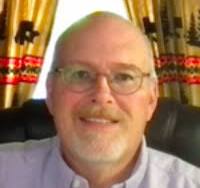 Jack L. Burbank is the Vice President for Advanced Communications at Sabre Systems, where he leads teams that design and develop next-generation wireless capabilities. Before joining Sabre, Mr. Burbank spent 19 years at The Johns Hopkins University Applied Physics Laboratory (JHU/APL), where among other roles, he served as the assistant supervisor of the Tactical Wireless Communications Group, the Chief Scientist of the Strategic Communications Group, and was a member of the Principal Professional Staff. While at JHU/APL, Mr. Burbank led technical teams that designed and developed many novel wireless communications capabilities and technologies for the US Government. Mr. Burbank’s areas of expertise include wireless communications, modeling and simulation, digital signal processing, and wireless network security. Mr. Burbank has published over 50 technical papers on wireless networking topics (terrestrial-based and space-based) and contributed to multiple books related to wireless communications. Mr. Burbank has authored two books through Wiley about wireless networking, modeling, and simulation. Mr. Burbank is writing a book for Springer entitled Fundamentals of Secure and Protected Communications, which is expected to be published in the first half of 2026. Mr. Burbank has participated in both the IEEE 802 and IETF standards communities. Mr. Burbank was co-author of RFC 5905, the Network Time Protocol (Version 4), which is widely used in most computer systems, smartphones, and other consumer electronics. Mr. Burbank is a Senior Member of the IEEE and currently serves as Vice Chair of the IEEE Susquehanna Section. Mr. Burbank earned his Bachelor of Science and Master of Science degrees in Electrical Engineering from North Carolina State University in 1994 and 1998, respectively. Mr. Burbank is working towards his PhD in Electrical Engineering at the University of North Dakota, researching Positioning, Navigation, and Timing (PNT) in GPS-denied environments.
Jack L. Burbank is the Vice President for Advanced Communications at Sabre Systems, where he leads teams that design and develop next-generation wireless capabilities. Before joining Sabre, Mr. Burbank spent 19 years at The Johns Hopkins University Applied Physics Laboratory (JHU/APL), where among other roles, he served as the assistant supervisor of the Tactical Wireless Communications Group, the Chief Scientist of the Strategic Communications Group, and was a member of the Principal Professional Staff. While at JHU/APL, Mr. Burbank led technical teams that designed and developed many novel wireless communications capabilities and technologies for the US Government. Mr. Burbank’s areas of expertise include wireless communications, modeling and simulation, digital signal processing, and wireless network security. Mr. Burbank has published over 50 technical papers on wireless networking topics (terrestrial-based and space-based) and contributed to multiple books related to wireless communications. Mr. Burbank has authored two books through Wiley about wireless networking, modeling, and simulation. Mr. Burbank is writing a book for Springer entitled Fundamentals of Secure and Protected Communications, which is expected to be published in the first half of 2026. Mr. Burbank has participated in both the IEEE 802 and IETF standards communities. Mr. Burbank was co-author of RFC 5905, the Network Time Protocol (Version 4), which is widely used in most computer systems, smartphones, and other consumer electronics. Mr. Burbank is a Senior Member of the IEEE and currently serves as Vice Chair of the IEEE Susquehanna Section. Mr. Burbank earned his Bachelor of Science and Master of Science degrees in Electrical Engineering from North Carolina State University in 1994 and 1998, respectively. Mr. Burbank is working towards his PhD in Electrical Engineering at the University of North Dakota, researching Positioning, Navigation, and Timing (PNT) in GPS-denied environments.
Email:
Address:141 Warren St, New Jersey Institute of Technology, The Lewis and Julia P. Kieman Conference Room, Newark, United States, 07102
Steve Floyd
Topic:
The High Frequency Active Auroral Research Program, “HAARP”, A Brief History and Engineering Review
The HAARP Research Facility is a state-of-the-art project focused on ionospheric research located in Alaska. It was jointly funded by the U.S. Air Force, U.S. Navy, and the Defense Advanced Research Projects Agency (DARPA). Designed and built by a team from APTI/BAE Systems based in Washington, D.C., the facility aims to analyze the Earth's ionosphere and explore the potential for developing ionospheric enhancement technologies for radio communications and surveillance, as well as new radar and radio communications research. Construction of the HAARP facility took place in three stages, starting in 1993, with research operations commencing in 1996 and final completion in 2007. In 2015, the HAARP program and all its assets were officially transferred to the University of Alaska Fairbanks (UAF), where it continues to operate today. The most prominent instrument at the HAARP Research Station is the Ionospheric Research Instrument (IRI), which features a phased array of 180 antennas and 180 individual radio transmitter systems. These operate in the high-frequency (HF) band, generating an adequate radiated power of 5 gigawatts. The HAARP IRI is recognized as one of the highest-powered HF transmitting systems in the world and is used to temporarily excite a limited area of the ionosphere for scientific study. Other instruments at the facility include VHF and UHF radars, a fluxgate magnetometer, a Digi-sonde (an ionosphere sounding device), an induction magnetometer, and low-light CCD camera optics systems. These tools are all employed to investigate the physical processes that occur in the excited ionosphere region. Additionally, the HAARP facility houses a 15-megawatt diesel engine-based power generation plant and a modern operations center. The HAARP program is acknowledged as a highly successful research initiative that has overcome numerous unique and challenging radio engineering design obstacles. This presentation will provide an in-depth view of how the HAARP systems were designed, constructed, installed, and operated, with a focus on the unique engineering aspects of building this modern research facility. Examples of scientific research conducted at the facility will also be included.
Biography:
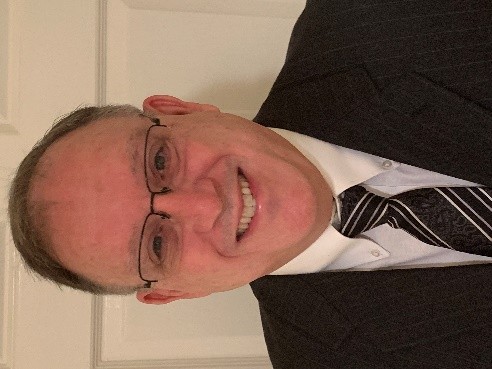 Steve Floyd is a BSEE graduate of Virginia Tech and obtained his MSEE (with emphasis on RF and Microwave Engineering and Radar Systems Engineering) from Johns Hopkins University in 1991. He became a licensed Amateur Radio operator at 12 and is active as W4YHD. Steve began his professional career designing high-power RF communications and Radar systems at E-Systems Inc., then became Chief RF Systems Design Engineer for HAARP, working at APTI/BAE Systems. As Chief Engineer for the HAARP facility, he was responsible for all hardware systems designs, equipment installation, and site operations until 2014 when he became a part-time Chief Engineer and consultant to the program. His current responsibilities are primarily in designing high-power SDR-based Radar systems, including EW and Communications systems, at Ultra Electronics. Steve is also active in the broadcast industry, an SBE member of DC Chapter 37, and has a lifelong love of radio broadcasting and amateur radio.
Steve Floyd is a BSEE graduate of Virginia Tech and obtained his MSEE (with emphasis on RF and Microwave Engineering and Radar Systems Engineering) from Johns Hopkins University in 1991. He became a licensed Amateur Radio operator at 12 and is active as W4YHD. Steve began his professional career designing high-power RF communications and Radar systems at E-Systems Inc., then became Chief RF Systems Design Engineer for HAARP, working at APTI/BAE Systems. As Chief Engineer for the HAARP facility, he was responsible for all hardware systems designs, equipment installation, and site operations until 2014 when he became a part-time Chief Engineer and consultant to the program. His current responsibilities are primarily in designing high-power SDR-based Radar systems, including EW and Communications systems, at Ultra Electronics. Steve is also active in the broadcast industry, an SBE member of DC Chapter 37, and has a lifelong love of radio broadcasting and amateur radio.
Address:United States
Prof. (Dr. Ing. Habil) Ulrich L. Rohde
Topic:
Optimizing Rod Antennas for Manpack Systems for Both Amateur and Military Applications
Rod antennas, commonly used in portable (manpack) radio systems, ensure reliable communication links in amateur and military contexts. These systems often need to function effectively under varying environmental and ionospheric conditions, where signal propagation is highly dependent on the frequency. A key principle in high-frequency (HF) communications is the concept of an optimum working frequency (OWF). This frequency, or a narrow band of frequencies, allows maximum signal stability and minimal path loss between two communicating points. The optimum frequency remains relatively stable for several hours, particularly under quasi-static ionospheric conditions. To take full advantage of this phenomenon, it is essential to align the antenna system with the dynamic characteristics of the propagation medium. Traditional rod antennas often suffer from impedance mismatch across a wide frequency range, which results in suboptimal radiation efficiency and poor signal quality. This presentation introduces an innovative hybrid impedance matching strategy that combines passive and active components, such as adaptive tuners, broadband baluns, and variable reactive networks. This method aims to improve the matching of the antenna and transmitter within the OWF range. Experimental and simulation results show that this adaptive matching technique significantly enhances the Voltage Standing Wave Ratio (VSWR) and adequate radiated power (ERP) across the target frequencies. Field tests further indicate that the optimized antenna system achieves a greater communication range, lower error rates, and improved link quality compared to traditional matching techniques used in legacy manpack systems. This approach holds particular promise in situations where operators have limited control over antenna geometry or deployment environments, such as during on-the-move tactical operations or with backpack-mounted configurations. Overall, this method represents a practical advancement in portable HF communications, with significant implications for emergency communication networks, expeditionary forces, and low-power field operations in civilian and military contexts.
Biography:
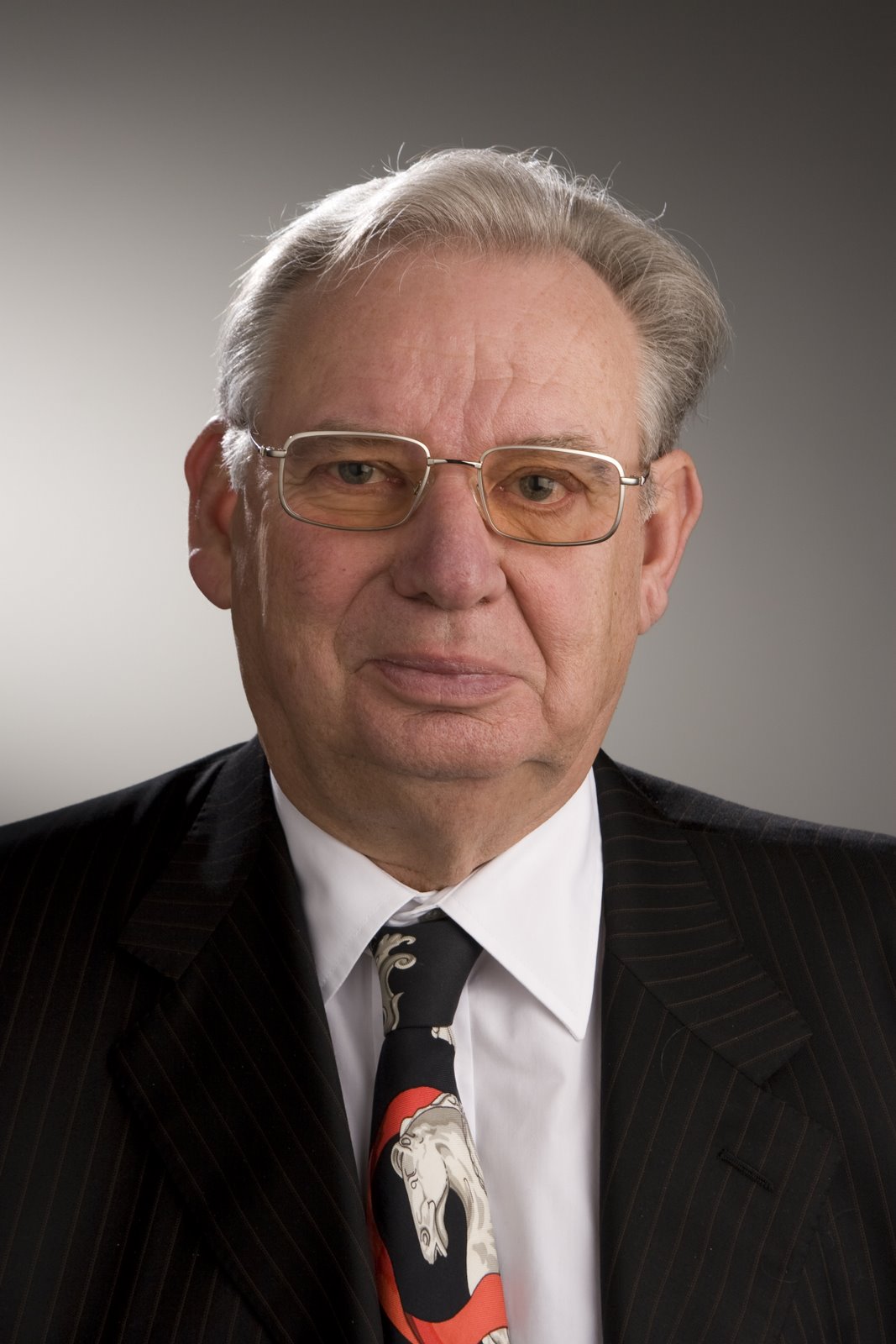 Prof. Dr. Ing. habil Ulrich L. Rohde, an IEEE Fellow, is a Partner of Rohde & Schwarz, Munich, Germany; Chairman of Synergy Microwave Corp., Paterson, New Jersey; President of Communications Consulting Corporation; serving as an honorary member of the Senate of the University of the Armed Forces Munich, Germany honorary member of the Senate of the Brandenburg University of Technology Cottbus–Senftenberg, Germany. Dr. Rohde is serving as a full Professor of Radio and Microwave Theory and Techniques at the University of Oradea and several other universities worldwide, to name a few: Honorary Professor IIT-Delhi, Honorary Chair Professor IIT-Jammu, Professor at the University of Oradea for microwave technology, an honorary professor at the BTU Cottbus-Senftenberg University of Technology, and professor at the German Armed Forces University Munich (Technical Informatics). Rohde has published 400+ scientific papers, co-authored over dozen books with John Wiley and Springer and hold 50 plus patents; received several awards, to name a few recent awards: recipient of 2023 IEEE Communications Society Distinguished Industry Leader Award, 2023 IEEE Antennas and Propagation Society Distinguished Industry Leader Award, 2022 IEEE Photonics Society Engineering Achievement Award, 2021 Cross of Merit of the Federal Republic of Germany, 2020 IEEE Region 1 Technological Innovation Award, 2019 IETE Fellow Award, 2019 IEEE CAS Industrial Pioneer Award; 2017 RCA Lifetime achievement award, 2017 IEEE-Cady Award, 2017 IEEE AP-S Distinguish achievement award, 2017 Wireless Innovation Forum Leadership Award, 2016 IEEE MTT-S Applications Award, 2015 IEEE-Rabi Award, 2015 IEEE Region-1 Award, and 2014 IEEE-Sawyer Award. Dr. Rohde is recognized in the list of Divine Innovators of November 2011, Microwave Journal. In 2006, Dr. Rohde was selected to be part of the Microwave Legends: Through innovation and invention, these 45 people, places, and things have shaped the microwave industry, Microwave & RF Magazine. IEEE recognized his five decades of scientific research contributions by establishing three awards in his name: (1) IEEE Ulrich L. Rohde Innovative Conference Paper Awards on Antenna Measurements and Applications, (2) IEEE Ulrich L. Rohde Innovative Conference Paper Awards on Computational Techniques in Electromagnetics, and (3) IEEE Ulrich L. Rohde Humanitarian Technical Field Project Award. Dr. Ulrich Rohde is the recipient of the “2021 Cross of Merit of the Federal Republic of Germany. The Order of Merit of the Federal Republic of Germany, also known as the Federal Cross of Merit, is the highest tribute the Federal Republic of Germany can pay to individuals for services to the nation. In December 2022, The Indian National Academy of Engineering (INAE) inducted Dr. Ulrich Rohde as a fellow during ceremonies for "outstanding contributions to engineering and also your dynamic leadership in the engineering domain, which has immensely contributed to the faster development of the country." Dr. Rohde is only the third foreign fellow elected by the INAE, preceded by Dr. Jeffrey Wineland, who won a Nobel Prize in Physics.
Prof. Dr. Ing. habil Ulrich L. Rohde, an IEEE Fellow, is a Partner of Rohde & Schwarz, Munich, Germany; Chairman of Synergy Microwave Corp., Paterson, New Jersey; President of Communications Consulting Corporation; serving as an honorary member of the Senate of the University of the Armed Forces Munich, Germany honorary member of the Senate of the Brandenburg University of Technology Cottbus–Senftenberg, Germany. Dr. Rohde is serving as a full Professor of Radio and Microwave Theory and Techniques at the University of Oradea and several other universities worldwide, to name a few: Honorary Professor IIT-Delhi, Honorary Chair Professor IIT-Jammu, Professor at the University of Oradea for microwave technology, an honorary professor at the BTU Cottbus-Senftenberg University of Technology, and professor at the German Armed Forces University Munich (Technical Informatics). Rohde has published 400+ scientific papers, co-authored over dozen books with John Wiley and Springer and hold 50 plus patents; received several awards, to name a few recent awards: recipient of 2023 IEEE Communications Society Distinguished Industry Leader Award, 2023 IEEE Antennas and Propagation Society Distinguished Industry Leader Award, 2022 IEEE Photonics Society Engineering Achievement Award, 2021 Cross of Merit of the Federal Republic of Germany, 2020 IEEE Region 1 Technological Innovation Award, 2019 IETE Fellow Award, 2019 IEEE CAS Industrial Pioneer Award; 2017 RCA Lifetime achievement award, 2017 IEEE-Cady Award, 2017 IEEE AP-S Distinguish achievement award, 2017 Wireless Innovation Forum Leadership Award, 2016 IEEE MTT-S Applications Award, 2015 IEEE-Rabi Award, 2015 IEEE Region-1 Award, and 2014 IEEE-Sawyer Award. Dr. Rohde is recognized in the list of Divine Innovators of November 2011, Microwave Journal. In 2006, Dr. Rohde was selected to be part of the Microwave Legends: Through innovation and invention, these 45 people, places, and things have shaped the microwave industry, Microwave & RF Magazine. IEEE recognized his five decades of scientific research contributions by establishing three awards in his name: (1) IEEE Ulrich L. Rohde Innovative Conference Paper Awards on Antenna Measurements and Applications, (2) IEEE Ulrich L. Rohde Innovative Conference Paper Awards on Computational Techniques in Electromagnetics, and (3) IEEE Ulrich L. Rohde Humanitarian Technical Field Project Award. Dr. Ulrich Rohde is the recipient of the “2021 Cross of Merit of the Federal Republic of Germany. The Order of Merit of the Federal Republic of Germany, also known as the Federal Cross of Merit, is the highest tribute the Federal Republic of Germany can pay to individuals for services to the nation. In December 2022, The Indian National Academy of Engineering (INAE) inducted Dr. Ulrich Rohde as a fellow during ceremonies for "outstanding contributions to engineering and also your dynamic leadership in the engineering domain, which has immensely contributed to the faster development of the country." Dr. Rohde is only the third foreign fellow elected by the INAE, preceded by Dr. Jeffrey Wineland, who won a Nobel Prize in Physics.
Email:
Address:52 Hillcrest Drive, , Upper Saddle River, United States, 074584
David Bart, President Emeritus, Radio Club of America
Topic:
RCA – Where History Meets Innovation
The Radio Club of America was founded in 1909 by enthusiastic young experimenters in wireless telegraphy. It quickly became a magnet for innovators, entrepreneurs, inventors, industry leaders, and historians interested in all aspects of communication without wires. Our pantheon of legendary members continues to hold major roles in developing radio, television, mobile communication, satellite, space research, mmWave, and digital technologies. We are a forum, a gathering place for professional, scientific, and amateur practitioners of these arts. Join us for a collegial discussion about how history meets innovation.
Biography:
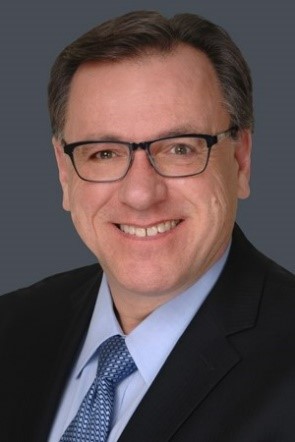 David has a BA and MBA from the University of Chicago. He is a Senior Member of IEEE and the long-time Treasurer of the IEEE Historical Committee. He is significant with the Milestones Program and serves on the Global Museum Subcommittee. He was recently inducted into IEEE Eta Kappa Nu’s Eta Chapter. David is President Emeritus of the Radio Club of America and Editor of the Proceedings of the Radio Club of America. His primary interests focus on the history and evolution of wired and wireless communication innovation.He is a Vice President and a Life Member of the Antique Wireless Association, and a former Co-Editor of the AWA Review. David serves on the Collections Committee of the Board of Directors of the Adler Planetarium in Chicago, and he is the former Vice President of the Museum of Broadcast Communications in Chicago. David has published extensively and provided numerous museum exhibits and designs regarding the history of wired and wireless electronic communications for over 25 years. He has published in and/or presented in/at: the Proceedings of the IEEE, IEEE Global History Network, IEEE Canadian Review, IEEE History Center Newsletter, Proceedings of the RCA, RCA Technical Symposium, AWA Conference, AWA Review, AWA Journal, New York Historical Society, and the American Association of Physics Teachers Joint AAPT/AAAS Meetings. David has received numerous awards for his work in publications, historical preservation, and museum exhibit development. He holds an amateur radio license, is a Life Member of the American Radio Relay League, and is the former President of the Antique Radio Club of Illinois.
David has a BA and MBA from the University of Chicago. He is a Senior Member of IEEE and the long-time Treasurer of the IEEE Historical Committee. He is significant with the Milestones Program and serves on the Global Museum Subcommittee. He was recently inducted into IEEE Eta Kappa Nu’s Eta Chapter. David is President Emeritus of the Radio Club of America and Editor of the Proceedings of the Radio Club of America. His primary interests focus on the history and evolution of wired and wireless communication innovation.He is a Vice President and a Life Member of the Antique Wireless Association, and a former Co-Editor of the AWA Review. David serves on the Collections Committee of the Board of Directors of the Adler Planetarium in Chicago, and he is the former Vice President of the Museum of Broadcast Communications in Chicago. David has published extensively and provided numerous museum exhibits and designs regarding the history of wired and wireless electronic communications for over 25 years. He has published in and/or presented in/at: the Proceedings of the IEEE, IEEE Global History Network, IEEE Canadian Review, IEEE History Center Newsletter, Proceedings of the RCA, RCA Technical Symposium, AWA Conference, AWA Review, AWA Journal, New York Historical Society, and the American Association of Physics Teachers Joint AAPT/AAAS Meetings. David has received numerous awards for his work in publications, historical preservation, and museum exhibit development. He holds an amateur radio license, is a Life Member of the American Radio Relay League, and is the former President of the Antique Radio Club of Illinois.
Email:
Address:United States
Agenda
4:00 PM -4:30 PM: Refreshments/Meal/Dessert and Networking
**Event Time:** 4:30 PM - 8:30 PM
**Featured Speakers:**
- Ulrich L. Rohde, Professor and Chairman, Synergy Microwave, NJ
- James K. Breakall, Penn State University, University Park, PA
- Jack L. Burbank, Vice President for Advanced Communications, Sabre Systems
- Steve Floyd, Chief Engineer and Principal Systems Engineer, HAARP, Ultra Electronics
- David Bart, President Emeritus, Radio Club of America (RCA)
Everyone is welcome to attend; there is no registration fee, and you do not need to be an IEEE member. Complimentary refreshments, desserts, and drinks will be provided for all attendees. Feel free to invite your friends and colleagues to take advantage of these invited lectures from globally recognized speakers in the fields of science, engineering, and humanitarian technology.
Co-sponsored by IEEE North Jersey Section and Radio Club of America (RCA)
 Talk 1: Optimizing Rod Antennas for Manpack Systems for Both Amateur and Military Applications, Invited Speaker: Prof. Ulrich L. Rohde
Talk 1: Optimizing Rod Antennas for Manpack Systems for Both Amateur and Military Applications, Invited Speaker: Prof. Ulrich L. Rohde Add Event to Calendar
Add Event to Calendar





